
PC100 Series
Installation and Operation Manual
X-PR-PC100-Series-PC-eng
Part Number: 541B207AAG
May, 2017
PC100 Series
Ultra-High Purity Digital Pressure Control Devices
PC115 Pressure Controller, Model PC125 Pressure Controller with Flow Meter

Installation and Operation Manual
X-PR-PC100-Series-PC-eng
Part Number: 541B207AAG
May, 2017PC100 Series
ESD (Electrostatic Discharge)
CAUTION: This instrument contains electronic components that are susceptible to damage by static electricity. Proper handling procedures must be observed
during the removal, installation or other handling of internal circuit boards or devices.
Handling Procedure:
1. Power to unit must be removed.
2. Personnel must be grounded, via a wrist strap or other safe, suitable means before any printed circuit card or other internal device is installed,
removed or adjusted.
3. Printed circuit cards must be transported in a conductive container. Boards must not be removed from protective enclosure until immediately before
installation. Removed boards must immediately be placed in protective container for transport, storage or return to factory.
Comments
This instrument is not unique in its content of ESD (electrostatic discharge) sensitive components. Most modern electronic designs contain components
that utilize metal oxide technology (NMOS, SMOS, etc.). Experience has proven that even small amounts of static electricity can damage or destroy these
devices. Damaged components, even though they appear to function properly, exhibit early failure.
Brooks Instrument designs, manufactures and tests its products to meet many national and international standards. These products must be properly
installed, operated and maintained to ensure they continue to operate within their normal specifications. The following instructions must be adhered to
and integrated into your safety program when installing, operating and maintaining Brooks Instrument products.
• To ensure proper performance, use qualified personnel to install, operate, update, program and maintain the product.
• Read all instructions prior to installing, operating and servicing the product. If this instruction manual is not the correct manual, please see back cover
for local sales office contact information. Save this instruction manual for future reference.
WARNING: Do not operate this instrument in excess of the specifications listed in the Instruction and Operation Manual. Failure to heed
this warning can result in serious personal injury and / or damage to the equipment.
• If you do not understand any of the instructions, contact your Brooks Instrument representative for clarification.
• Follow all warnings, cautions and instructions marked on and supplied with the product.
WARNING: Prior to installation ensure this instrument has the required approval ratings to meet local and national codes. Failure to heed this warning can
result in serious personal injury and / or damage to the equipment.
• Install your equipment as specified in the installation instructions of the appropriate instruction manual and per applicable local and national codes.
Connect all products to the proper electrical and pressure sources.
• Operation: (1) Slowly initiate flow into the system. Open process valves slowly to avoid flow surges. (2) Check for leaks around the flow meter inlet
and outlet connections. If no leaks are present, bring the system up to the operating pressure.
• Please make sure that the process line pressure is removed prior to service. When replacement parts are required, ensure that qualified people use
replacement parts specified by Brooks Instrument. Unauthorized parts and procedures can affect the product's performance and place the safe
operation of your process at risk. Look-alike substitutions may result in fire, electrical hazards or improper operation.
• Ensure that all equipment doors are closed and protective covers are in place to prevent electrical shock and personal injury, except when
maintenance is being performed by qualified persons.
WARNING: For liquid flow devices, if the inlet and outlet valves adjacent to the devices are to be closed for any reason, the devices must be completely
drained. Failure to do so may result in thermal expansion of the liquid that can rupture the device and may cause personal injury.
All pressure equipment with an internal pressure greater than 0.5 bar (g) and a size larger than 25mm or 1" (inch) falls under the Pressure Equipment Directive (PED).
• The Specifications Section of this manual contains instructions related to the PED directive.
• Products described in this manual are in compliance with EN directive 2014/34/EU.
• All Brooks Instrument Flowmeters fall under fluid group 1.
• Products larger than 25mm or 1" (inch) are in compliance with PED category I, II or III.
• Products of 25mm or 1" (inch) or smaller are Sound Engineering Practice (SEP).
The Brooks Instrument (electric/electronic) equipment bearing the CE mark has been successfully tested to the regulations of the Electro Magnetic
Compatibility (EMC directive 2014/30/EU).
Special attention however is required when selecting the signal cable to be used with CE marked equipment.
Quality of the signal cable, cable glands and connectors:
Brooks Instrument supplies high quality cable(s) which meets the specifications for CE certification.
If you provide your own signal cable you should use a cable which is overall completely screened with a 100% shield.
“D” or “Circular” type connectors used should be shielded with a metal shield. If applicable, metal cable glands must be used providing cable screen clamping.
The cable screen should be connected to the metal shell or gland and shielded at both ends over 360 Degrees.
The shield should be terminated to an earth ground.
Card Edge Connectors are standard non-metallic. The cables used must be screened with 100% shield to comply with CE certification.
The shield should be terminated to an earth ground.
For pin configuration : Please refer to the enclosed Instruction Manual.
European Pressure Equipment Directive (PED)
European Electromagnetic Compatibility (EMC)
Essential Instructions
Read before proceeding!

PC100 Series
Installation and Operation Manual
X-PR-PC100-Series-PC-eng
Part Number: 541B207AAG
May, 2017
Dear Customer,
We appreciate this opportunity to service your pressure control and flow measurement requirements with a Brooks
Instrument device. Every day, flow customers all over the world turn to Brooks Instrument for solutions to their gas
and liquid low-flow applications. Brooks provides an array of pressure control and flow measurement products for
various industries from biopharmaceuticals, oil and gas, fuel cell research and chemicals, to medical devices,
analytical instrumentation, semiconductor manufacturing, and more.
The Brooks product you have just received is of the highest quality available, offering superior performance,
reliability and value to the user. It is designed with the ever changing process conditions, accuracy requirements
and hostile process environments in mind to provide you with a lifetime of dependable service.
We recommend that you read this manual in its entirety. Should you require any additional information concerning
Brooks products and services, please contact your local Brooks Sales and Service Office listed on the back cover
of this manual or visit www.BrooksInstrument.com.
Yours sincerely,
Brooks Instrument

Installation and Operation Manual
X-PR-PC100-Series-PC-eng
Part Number: 541B207AAG
May, 2017PC100 Series
THIS PAGE WAS
INTENTIONALLY
LEFT BLANK

i
PC100 Series
Installation and Operation Manual
X-PR-PC100-Series-PC-eng
Part Number: 541B207AAG
May, 2017
Contents
Paragraph Page
Number Number
Section 1 General Information
1-1 Introduction ................................................................................................................................... 1-1
1-2 How to Use This Manual ...............................................................................................................1-1
1-3 Product Support References.........................................................................................................1-2
1-4 Notice and Caution Statements..................................................................................................... 1-2
1-5 Product Warranty .......................................................................................................................... 1-2
1-6 How to Order a PC100 Series Device...........................................................................................1-2
1-7 Industry Standard References....................................................................................................... 1-2
1-8 Glossary of Terms and Acronyms .................................................................................................1-2
1-9 Description ....................................................................................................................................1-5
1-10 Specifications for PC100 Series Devices ...................................................................................... 1-6
Section 2 Installation
2-1 General ......................................................................................................................................... 2-1
2-2 Receipt of Equipment.................................................................................................................... 2-1
2-3 Recommended Storage Practice .................................................................................................. 2-1
2-4 Return Shipment ...........................................................................................................................2-1
2-5 Transit Precautions ....................................................................................................................... 2-2
2-6 Removal from Storage ..................................................................................................................2-2
2-7 Gas Connections...........................................................................................................................2-2
2-8 In-Line Filter .................................................................................................................................. 2-2
2-9 Mechanical Installation ..................................................................................................................2-3
2-10 Flow Controller Installation Arrangement ...................................................................................... 2-3
2-11 Purge the Gas Supply Line Before PC100 Series Installation.......................................................2-4
2-12 Position and Mount the PC100 Series ..........................................................................................2-5
2-13 Perform a Leak Test......................................................................................................................2-6
2-14 Zeroing the PC100 Series - Setup ................................................................................................ 2-6
2-14-1 Zeroing the PC100 Series Pressure Transducer from the LCD Display Panel (PC115 & PC125) ...... 2-6
2-14-2 Zeroing PC125 Series Flow from LCD Display Panel ...................................................................2-8
2-15 Performance Checks .................................................................................................................... 2-9
2-16 Electrical Connections.................................................................................................................. 2-10
2-16-1 DeviceNet Connections................................................................................................................2-10
Section 3 Operation
3-1 General ......................................................................................................................................... 3-1
3-2 Theory of Operation for Pressure Control ..................................................................................... 3-1
Section 4 Maintenance & Troubleshooting
4-1 Overview .......................................................................................................................................4-1
4-2 Maintenance.................................................................................................................................. 4-1
4-3 Troubleshooting............................................................................................................................. 4-3
4-4 Troubleshooting Checklist .............................................................................................................4-3
Section 5 Product Description Code
5-1 Overview .......................................................................................................................................5-1
Appendix A: Essential Instructions ...........................................................................................................A-1
Warranty, Local Sales/Service Contact Information.......................................................................... Back Cover

ii
PC100 Series
Installation and Operation Manual
X-PR-PC100-Series-PC-eng
Part Number: 541B207AAG
May, 2017
Contents
Figure Page
Number Number
1-1 PC100 Series Digital Pressure Controller .....................................................................................1-1
1-2 LCD Display ..................................................................................................................................1-6
1-3 Dimensions - PC100 Series ..........................................................................................................1-8
2-1 Typical PC100 Series Configurations............................................................................................ 2-3
2-2 PC100 Series Mounting Attitude Positions for UPSTREAM Applications...................................... 2-5
2-3 PC100 Series Mounting Attitude Positions for DOWNSTREAM Applications ...............................2-5
2-4 Display with PSI Reading ..............................................................................................................2-7
2-5 Display Reading Zero PSI .............................................................................................................2-7
2-6 Display Set to %FS ....................................................................................................................... 2-8
2-7 % Flow Display Set to Zero ........................................................................................................... 2-8
2-8 Diagnostic Port..............................................................................................................................2-9
2-9 PC100 Series DeviceNet Connection .......................................................................................... 2-10
2-10 PC100 Series Interface Options................................................................................................... 2-10
Table Page
Number Number
1-1 Industry Standard References.......................................................................................................1-3
1-2 Terms and Acronyms ....................................................................................................................1-4
1-3 Specifications - PC100 Series.......................................................................................................1-7
4-1 PC100 Series Troubleshooting Guide ...........................................................................................4-4
5-1 PC100 Series Product Description Code Table............................................................................. 5-1

1-1
PC100 Series
Installation and Operation Manual
X-PR-PC100-Series-PC-eng
Part Number: 541B207AAG
May, 2017
Section 1 General Information
1-1 Introduction
Brooks Instrument's PC100 Series pressure control and flow measurement
devices deliver outstanding performance, reliability, and system simplicity.
Built on the proven, advanced technology of the GF100 Series mass flow
controllers, process throughput and yield are maximized while process
costs are reduced. The PC100 Series is designed for semiconductor,
MOCVD, and other pressure control applications that require a high purity
all-metal flow path.
• PC115 Pressure Controller and PC125 Pressure Controller with
integrated thermal mass flow metering. Initial product offering includes N2
and H2 gases with full scale 1000 Torr pressure operation.
• An independent diagnostic/service port to to tune the pressure controller
without removing the unit
• Long-term stability due to extremely low wetted surface area, and
corrosion resistant Hastelloy
®
sensor and valve seat
Figure 1-1 PC100 Series Digital Pressure Controller
1-2 How to Use This Manual
This manual is intended to provide the user with all the information
necessary to install, operate, troubleshoot and maintain these pressure
control devices. The manual is organized in the following sections:
Section 1 General Information
Section 2 Installation
Section 3 Operation
Section 4 Maintenance and Troubleshooting
Section 5 Product Description Code
Appendix A Essential Instructions
Warranty, Local Sales/Service Contact Information
It is recommended that this manual be read in its entirety before attempting
to operate or repair these devices.

1-2
PC100 Series
Installation and Operation Manual
X-PR-PC100-Series-PC-eng
Part Number: 541B207AAG
May, 2017
Section 1 General Information
1-3 Product Support References
Refer to www.BrooksInstrument.com for Brooks sales and service
locations and to obtain other documents that support the PC100 Series.
Those documents include:
- Brooks DeviceNet Supplemental manual for PC100 Series:
X-DPT-DeviceNet-PC100-PC-eng:
- Brooks PC100 Series Data Sheet:
DS-PR-PC100-Series-PC-eng
1-4 Notice and Caution Statements
Warning, caution and notice statements are located throughout this manual
in the ANSI format. A WARNING statement indicates a potentially
hazardous situation which, if not avoided, COULD result in death or serious
injury. A CAUTION statement indicates a potentially hazardous situation
which, if not avoided, MAY result in minor or moderate injury. It may also be
used to alert against unsafe practices. A NOTICE statement describes
specific information that requires special attention.
1-5 Product Warranty
Product warranty information can be found on the Back Cover of this
Manual and on the Brooks website at www.BrooksInstrument.com. This
information provides general warranty information, limitations, disclaimers,
and applicable warranty periods according to product group.
1-6 How to Order a PC100 Series Device
Refer to Section 5.
1-7 Industry Standard References
Refer to Table 1-1.
1-8 Glossary of Terms and Acronyms
Refer to Table 1-2

1-3
PC100 Series
Installation and Operation Manual
X-PR-PC100-Series-PC-eng
Part Number: 541B207AAG
May, 2017
Section 1 General Information
Table 1-1 Industry Standard References
Reference Number Reference Description
MIL-STD-810 Method 514.4, Category 1, Transportation Requirement
Method 516.4, Procedure 1, Functional Shock Test Requirement
SEMI E12 Standard temperature and pressure
SEMI E16 Guideline for determining and describing MFC leak rates
SEMI E17 Guideline for MFC transient characteristics tests
SEMI E18 Guideline for temperature specifications of the MFC
SEMI E27 Standard for MFC and MFM linearity
SEMI E28 Guideline for pressure specifications for the MFC
SEMI E52 Practice for referencing gases used in digital MFCs
SEMI E54 Sensor actuator network connections for DeviceNet
SEMI E56 Test method for detemining accuracy, linearity, repeatability, short-term
reproducibility, hystereses of thermal MFCs
SEMI E66 Test method for determining particle contribution by MFCs
SEMI E67 Test method for determining reliabilty of MFCs
SEMI E68 Test method for determining warm-up time of MFCs
SEMI E69 Test method for reproducibilty and zero drift for thermal MFCs
SEMI E80 Test method for determining attitude sensitivity of MFCs
SEMI E16-90 Guidelines for determining and describing mass flow controllers leak rates
SEMI F19 Specification for the finish of the wetted surface of electro polished
216L stainless steel components
SEMI F20 Specifications for 316L stainless steel bar, extruded shapes, plate, and
investment castings for components used in ultra-high purity semi
manufacturing applications
SEMI F36 Guide for dimensions and connections of gas distribution components
SEMI F37 Method for determination of surface roughness parameters for gas
distribution system components
SEMI F44 Guideline for standardization of machined stainless steel weld fittings
SEMI F45 Guideline for standardization of machined stainless steel reducing fittings
SEMI F47 Specifications for semiconductor processing equipment
voltage sag immunity
SEMI S2 Environmental, Health and Safety Guidelines
SEMI S9 Dielectric testing
SEMI S10 Risk assessment
SEMI S12 Decontamination of fielded products

1-4
PC100 Series
Installation and Operation Manual
X-PR-PC100-Series-PC-eng
Part Number: 541B207AAG
May, 2017
Section 1 General Information
Table 1-2 Terms and Acronyms
Term or Acronym Definition
CSR Customer Special Requirement
CVD Chemical Vapor Deposition
DeviceNet A 5-wire local network I/O communication device
that employs a command/response
communication protocol
DSP Digital Signal Processor
EPI Epitaxy (EPI) A process technology where a pure silicon
crystalline structure is deposited or “grown” on a
bare wafer, enabling a high-purity starting point
for building the semiconductor device.
F.S. Full Scale
LED Light Emitting Diode
PSIA Pounds per Square Inch Absolute
PSID Pounds per Square Inch Differential
PSIG Pounds per Square Inch Gauge
HC Standard Configuration w/ Hastelloy® sensors
(to reduce reaction to corrosive gases)
S.P. Setpoint
Step Technology Enables fast set point control through a high
speed DSP and low volume drive circuit
VIU Vertical mounting attitude with inlet side facing up

1-5
PC100 Series
Installation and Operation Manual
X-PR-PC100-Series-PC-eng
Part Number: 541B207AAG
May, 2017
Section 1 General Information
1-9 Description
The Brooks PC100 Series digital pressure control with patented flow
sensor combined with a high speed ARM processor and fast acting
diaphragm-free valve assembly enables:
• Faster response and settling time for improved pressure control
• Reduced diverted gas consumption and associated abatement costs
• User programmable start-up function for processes requiring a slow
ramped pressure control
Accessories:
A331710003 Cable Assembly 2.5 mm
214F027AAA USB-RS485 Converter with DB-9 Female
A332295001 Power Supply PC
A332297001 Cable, Power, DeviceNet
PC125 Only - Advanced Thermal Flow Measurement Sensor
Brooks proprietary highly corrosion resistant Hastelloy C-22 sensor with an
enhanced sensor manufacturing and burn in process incorporates a unique
orthogonal sensor mounting orientation to eliminate sensor drift caused by
valve heating effects and eliminates thermal siphoning effects. This unique
sensor configuration includes an optimized temperature profile for gases
prone to thermal decomposition. This design results in:
• Enhanced signal to noise performance for improved accuracy at low
set points
• Superior reproducibility at elevated temperature through new
isothermal packaging and onboard conditioning electronics with
ambient temperature sensing and compensation
• Improved long-term stability
High Purity Flow Path
The Brooks PC100 Series has an all metal, corrosion resistant Semi F20
compliant wetted flow path with highly corrosion resistant Hastelloy C-22
valve seat and jet orifice.
• Overall reduced surface area and un-swept volumes for faster dry-down
during purge steps
• Long-term sensor and device stability for maximum yield and throughput
Mechanical Configurations
• 1-1/8" body width, 1/4" VCR male
Enhanced Diagnostics and User Interface
The Brooks PC100 Series devices provide for in-line device evaluation and
instantaneous troubleshooting through:
• Independent diagnostic/service port
• High visibility LCD display with easy accessible push button for local
indication of Flow (%), Temperature (
o
C), Pressure (PSIA/kPa/Torr) and
Network Address

1-6
PC100 Series
Installation and Operation Manual
X-PR-PC100-Series-PC-eng
Part Number: 541B207AAG
May, 2017
Section 1 General Information
Figure 1-2 LCD Display
• Zero button to easily re-zero the device during scheduled maintenance.
Zero button will zero pressure transducer of thermal sensor depending on
what is visible on the display.
This combination of features results in limited service interruption and
reduced downtime.
Communication Interfaces
The PC100 Series supports DeviceNet™ communication protocol.
DeviceNet is a multi-drop connection that allows a maximum of 64 devices
to be connected on the same network. Brooks Instrument’s DeviceNet
profile has been certified by the ODVA™ (Open DeviceNet Vendor’s
Association).
1-10 Specifications for PC100 Series Devices
See Table 1-3 for specifications for the PC100 Series.
See Figure 1-3 for dimensions for the PC100 Series

1-7
PC100 Series
Installation and Operation Manual
X-PR-PC100-Series-PC-eng
Part Number: 541B207AAG
May, 2017
Section 1 General Information
Table 1-3 Specifications - PC100 Series
PerformancePerformance
PerformancePerformance
Performance
PC115PC115
PC115PC115
PC115
PC125PC125
PC125PC125
PC125
Embedded Thermal Flow Sensor: No Yes
Pressure Control Mode: Downstream and Upstream Downstream
Full Scale Range: o Min Flow Range: 0-20 sccm H2; 0-20 sccm N2 10 slm N2 and H2
o Max Flow Range: 0-5 slm H2; 0-5 slm N2
Pressure ReadingPressure Reading
Pressure ReadingPressure Reading
Pressure Reading
Reference: Downstream: 34 to 100 psia 34 to 100 psia
Upstream: 0 Torr to 350 Torr
Accuracy: ±1% of reading
Zero Temp. Coefficient: ±0.02% of F.S./°C
Span Temp. Coefficient: ±0.04% of reading/°C
Pressure ControlPressure Control
Pressure ControlPressure Control
Pressure Control
Range: Downstream: >20 Torr to 100% F.S. >20 Torr to 100% F.S.
Upstream*: >150 Torr to 100% F.S.
*Upstream controller turndown is directly tied to reference pressure. Control range is assuming hard vacuum on the outlet and 150 Torr min DP to achieve max flow.
Accuracy: <10% F.S. = ±0.2% of F.S.
>10% to 100% = ±1% of reading
Response Time: <1 sec typ. (excluding system time constant)
Flow ReadingFlow Reading
Flow ReadingFlow Reading
Flow Reading
Measurement Range: N/A 2 to 100% of F.S.
Accuracy
::
::
: N/A ±1% of reading> 35% F.S.
±0.35% of F.S. 2 to 35% F.S.
Repeatability: N/A ±0.2% of F.S.
Resolution: N/A ±0.1% of F.S.
Zero Temp. Coefficient: N/A <0.05% of F.S./°C
Span Temp. Coefficient: N/A <0.08% of reading/°C
Zero Stability: N/A <0.5% per year
Valve Leak-by: <1% of orifice F.S. (N2 @ 25 psig inlet to atm.)
RatingsRatings
RatingsRatings
Ratings
Operating Temperature Range: 10 to 50°C
Transducer Pressure Range: 1000 Torr F.S.
Transducer Over Pressure Limit: 2 x F.S. range
Differential Pressure: Upstream min DP 150 Torr; Downstream max DP 45 psid Max DP 45 psid
Leak Integrity (external): 1 x 10
-10
atm. cc/sec He
ElectricalElectrical
ElectricalElectrical
Electrical
Digital Communication: DeviceNet
Electrical Connection DeviceNet: via 5-pin “M12” connector
Diagnostic/Service Port: RS485 via 2.5 mm jack
Power Supply/Consumption DeviceNet: 545 mA max. @ +11-25 Vdc
Diagnostics & DisplayDiagnostics & Display
Diagnostics & DisplayDiagnostics & Display
Diagnostics & Display
Status Lights: MFC Health, Network Status
Display Type: Top Mount Rotatable Integrated LCD
Viewing Distance Fixed: 10 feet
Units Displayed: Resolution Flow (%), Temp. (°C), Pressure (Torr, psia, kPa)/0.1 (unit)
MechanicalMechanical
MechanicalMechanical
Mechanical
Valve Type: Normally Closed
Wetted Materials:
SEMI F20 HP Compliant, 316L VIM/VAR, Hastelloy C-22, 316L Stainless Steel, 304
Surface Finish:
5μ inch Ra (0.1 μm Ra)
ComplianceCompliance
ComplianceCompliance
Compliance
EMC: EMC Directive 2014/30/EU CE: EN61326-1: 2013
Environmental Compliance: RoHS Directive (2011/65/EU)
REACH Directive EC 1907/2006

1-8
PC100 Series
Installation and Operation Manual
X-PR-PC100-Series-PC-eng
Part Number: 541B207AAG
May, 2017
Section 1 General Information
Figure 1-3 Dimensions - PC100 Series
PC100 Series - VCR
®
Configuration

2-1
PC100 Series
Installation and Operation Manual
X-PR-PC100-Series-PC-eng
Part Number: 541B207AAG
May, 2017
Section 2 Installation
2-1 General
This section provides installation instructions for the Brooks PC100 Series
Pressure Control Devices. The installation process consists of purging the
gas supply line prior to installation, unpacking and inspecting the device,
connecting the device to the gas supply line and testing for leaks.
2-2 Receipt of Equipment
When the equipment is received, the outside packing case should be
checked for damage incurred during shipment. If the packing case is
damaged, the local carrier should be notified at once regarding his liability.
A report should be submitted to the nearest Brooks Instrument location
listed on the Global Service Network page on our website:
BrooksInstrument.com/GlobalSupportCenters
Remove the envelope containing the packing list. Carefully remove the
instrument from the packing case. Make sure spare parts, accessories and
documentation are not discarded with the packing materials. Inspect for
damaged or missing parts.
This device has been assembled, calibrated, and double-vacuum bagged
in a Class 100 clean room. In your semi-clean area, remove the outer bag
only. Pass the device into your clean area. Remove the second clean room
compatible bag only when the device is ready to be tested and/or installed
in your clean system.
2-3 Recommended Storage Practice
If intermediate or long-term storage of the device is required, it is
recommended that it be stored in accordance with the following conditions:
• Within the original shipping container.
• Ambient temperature 21°C (70°F) nominal, 32°C (90°F) maximum, 7°C
(45°F) minimum.
• Relative humidity 45% nominal, 60% maximum, 25% minimum.
2-4 Return Shipment
Prior to returning any instrument to the factory for any reason, visit our
website for instructions on how to obtain a Return Materials Authorization
Number (RMA #) and complete a Decontamination Statement to
accompany it: BrooksInstrument.com/Service. All instruments returned to
Brooks also require a Material Safety Data Sheet (MSDS) for the fluid(s)
used in the instrument. Failure to provide this information will delay
processing of the instrument.
Instrument must have been purged in accordance with the following:

2-2
PC100 Series
Installation and Operation Manual
X-PR-PC100-Series-PC-eng
Part Number: 541B207AAG
May, 2017
Section 2 Installation
2-5 Transit Precautions
To safeguard against damage during transit, transport the device to the
installation site in the same container used for transportation from the
factory, if circumstances permit.
2-6 Removal from Storage
Upon removal of the device from storage, a visual inspection should be
conducted to verify its "as-received" condition. If the device has been
subject to storage conditions in excess of those recommended (refer to "2-
3 Recommended Storage Practice" on p. 2-1), it should be subjected to a
pneumatic pressure test in accordance with applicable vessel codes. To
maintain a devices ultraclean integrity, this service should be performed by
the factory or one of the certified service centers.
2-7 Gas Connections
Prior to installation, ensure that all piping is clean and free from
obstructions. Install piping in such a manner that permits easy access to
the device if removal becomes necessary.
2-8 In-Line Filter
It is recommended that an in-line filter be installed upstream from the
device to prevent the possibility of any foreign material entering the flow
sensor or control valve. The filtering element should be replaced
periodically or ultrasonically cleaned.

2-3
PC100 Series
Installation and Operation Manual
X-PR-PC100-Series-PC-eng
Part Number: 541B207AAG
May, 2017
Section 2 Installation
Figure 2-1 Typical PC100 Series Configurations
2-9 Mechanical Installation
The recommended installation procedure guidelines are as follows:
• The device should be located in a clean, dry atmosphere relatively free
from shock and vibration.
• Leave sufficient room for access to the user interface, display and MAC
ID and baud rate switches (if equipped) at the top of the device.
• Install the device in such a manner that permits easy purge and removal
if the device requires servicing.
2-10 Flow Controller Installation Arrangement
Typical configurations are shown below in Figure 2-1.

2-4
PC100 Series
Installation and Operation Manual
X-PR-PC100-Series-PC-eng
Part Number: 541B207AAG
May, 2017
Section 2 Installation
2-11 Purge the Gas Supply Line Before PC100 Series Installation
Before operating the PC100 Series, the gas supply line must be completely
purged with nitrogen or argon to ensure the line is free from toxic or
flammable gases, contaminants, moisture, and oxygen. The purge gas
must be free of moisture and oxygen to less than 100 ppb. Purge the gas
lines as follows or in accordance to prescribed company and safety
procedures.
1. Shut off the process gas supply valve(s) upstream of the PC100 Series.
If such a valve is not available, shut the valve on the gas panel. Tag the
valve at this point to prevent accidental re-exposure of the process gas
to the gas line.
2. Cycle purge the gas line with dry nitrogen or argon to fully flush out the
process gas. Cycle purging consists of evacuating to a low pressure
adequate to induce out-gassing and then purging to remove adhered
moisture and oxygen. If a toxic or reactive gas is present and a clogged
PC100 Series is suspected, then proceed with caution. Pump down
and purge the PC100 Series from both downstream and upstream
lines. If check valves are present in the gas line, both pumping down
and purging are required. Pumping down without purging is inadequate.
If a good vacuum source is not available, the PC100 Series can be de-
contaminated by purge only.
3. Repeat the purge cycle several times within 2-4 hours to complete the
cleaning. For toxic and corrosive gasses, it is recommended to use
100-120 cycles.

2-5
PC100 Series
Installation and Operation Manual
X-PR-PC100-Series-PC-eng
Part Number: 541B207AAG
May, 2017
Section 2 Installation
Figure 2-2 PC100 Series Mounting Attitude Positions for UPSTREAM Applications
Figure 2-3 PC100 Series Mounting Attitude Positions for DOWNSTREAM Applications
2-12 Position and Mount the PC100 Series
Position the PC100 Series so that the gas flow is pointed in the direction of
the flow arrow on the PC100 Series rear S/N label. The various mounting
positions for UPSTREAM applications are described in Figure 2-2, and the
mounting positions for DOWNSTREAM applications are described in
Figure 2-3.
The standard orientation for the PC100 Series is Horizontal Base Down (HBD).
The PC100 Series is configured with ¼" VCR fittings, secure the PC100
Series block to the gas panel with two, 8-32-UNC-2B" screws. Then
connect the inlet/ outlet fittings to the gas supply line using two
wrenches. Tighten the fittings to manufacturer recommendations.

2-6
PC100 Series
Installation and Operation Manual
X-PR-PC100-Series-PC-eng
Part Number: 541B207AAG
May, 2017
Section 2 Installation
2-13 Perform a Leak Test
It is critical to leak test the gas supply lines and PC100 Series connections
before turning on the process gas supply after any new installation. Check
for leaks using a helium leak detector or any other appropriate leak test
method. Follow leak test specifications as defined by integrator.
2-14 Zeroing the PC100 Series - Setup
The PC100 Series pressure transducer and flow meter zeroing process is
performed from the backlight LCD display on top of the PC100 Series.
OEM tools using a microprocessor or computer for operating the PC100
Series should sequence the PC100 Series off between processes. To
accomplish this, simply provide a zero set point. The PC100 Series will
shut off automatically.
Shut-off valves, whether upstream or downstream from the PC100 Series,
should be programmed to turn on before the PC100 Series is turned on
and turned off after the PC100 Series is turned off.
The following steps are required before the PC100 Series is zeroed.
1. Make sure that the PC100 Series has been installed inside the
equipment (panel) for at least four hours and powered up at least one
hour prior to zeroing. This insures that the PC100 Series is in its "use
attitude" and is operating at normal temperature. If the PC100 Series is
subjected to a vacuum purge for more than one minute, turn off the
PC100 Series (ie., provide a zero setpoint) for a time period of twice the
vacuum purge time.
2. Read the output signal of the PC100 Series. This output signal is the
initial flow in percent of full scale. The output signal should be 0.0 (±
0.1%). If the output signal is too high, re-zero the PC100 Series as
described below.
2-14-1 Zeroing the PC100 Series Pressure Transducer from the LCD Display Panel (PC115 & PC125)
1. Place the PC100 Series under a strong vacuum with the PC100
Series set to 100% set point. Make sure that upstream valve is
closed and the downstream valve is open. Allow time for the
upstream pressure to bleed off.
Page is loading ...
Page is loading ...
Page is loading ...
Page is loading ...
Page is loading ...
Page is loading ...
Page is loading ...
Page is loading ...
Page is loading ...
Page is loading ...
Page is loading ...
Page is loading ...
Page is loading ...
Page is loading ...
Page is loading ...
Page is loading ...
Page is loading ...
Page is loading ...
Page is loading ...
Page is loading ...
Page is loading ...
Page is loading ...
Page is loading ...
Page is loading ...
Page is loading ...
Page is loading ...
Page is loading ...
Page is loading ...
Page is loading ...
Page is loading ...
Page is loading ...
Page is loading ...
Page is loading ...
Page is loading ...
Page is loading ...
Page is loading ...
-
 1
1
-
 2
2
-
 3
3
-
 4
4
-
 5
5
-
 6
6
-
 7
7
-
 8
8
-
 9
9
-
 10
10
-
 11
11
-
 12
12
-
 13
13
-
 14
14
-
 15
15
-
 16
16
-
 17
17
-
 18
18
-
 19
19
-
 20
20
-
 21
21
-
 22
22
-
 23
23
-
 24
24
-
 25
25
-
 26
26
-
 27
27
-
 28
28
-
 29
29
-
 30
30
-
 31
31
-
 32
32
-
 33
33
-
 34
34
-
 35
35
-
 36
36
-
 37
37
-
 38
38
-
 39
39
-
 40
40
-
 41
41
-
 42
42
-
 43
43
-
 44
44
-
 45
45
-
 46
46
-
 47
47
-
 48
48
-
 49
49
-
 50
50
-
 51
51
-
 52
52
-
 53
53
-
 54
54
-
 55
55
-
 56
56
Ask a question and I''ll find the answer in the document
Finding information in a document is now easier with AI
in other languages
- italiano: Brooks 4860 Istruzioni per l'uso
- slovenčina: Brooks 4860 Návod na používanie
- eesti: Brooks 4860 Kasutusjuhend
- română: Brooks 4860 Instrucțiuni de utilizare
Related papers
-
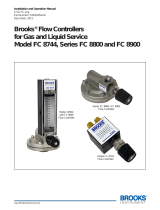 Brooks FC8744 / FC8800 / FC8900 Operating instructions
Brooks FC8744 / FC8800 / FC8900 Operating instructions
-
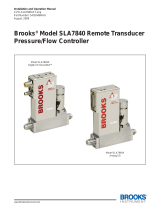 Brooks SLA7840 Operating instructions
Brooks SLA7840 Operating instructions
-
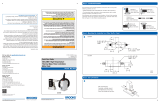 Brooks 5850EMH / 5851EMH Quick start guide
Brooks 5850EMH / 5851EMH Quick start guide
-
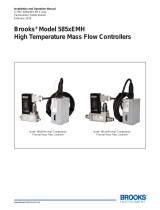 Brooks 5850EMH / 5851EMH Operating instructions
Brooks 5850EMH / 5851EMH Operating instructions
-
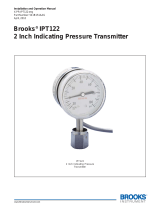 Brooks IPT122 Operating instructions
Brooks IPT122 Operating instructions
-
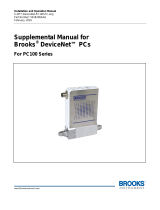 Brooks PC100 Series User manual
Brooks PC100 Series User manual
-
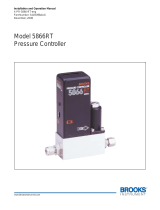 Brooks 5866RT Operating instructions
Brooks 5866RT Operating instructions
-
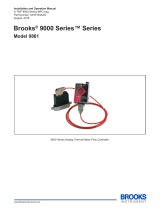 Brooks 9861 Operating instructions
Brooks 9861 Operating instructions
-
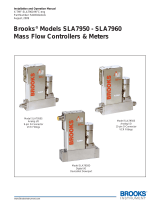 Brooks SLA7950 Operating instructions
Brooks SLA7950 Operating instructions
-
 Brooks 8601 Operating instructions
Brooks 8601 Operating instructions
Other documents
-
Micro Motion Pressure Equipment Directive - Model 3098 Owner's manual
-
Micro Motion Pressure Equipment Directive - Model 7812 Owner's manual
-
SENSIRION SFC5400 User guide
-
Panasonic SBTP100 Owner's manual
-
BRONKHORST EL-FLOW Prestige Quick Installation Guide
-
Panasonic SBTP100 Operating instructions
-
Panasonic SB-TP100 User manual
-
Waeco PC100 Operating instructions
-
Lathem PC400 User manual
-
LG PC700-DHCJP Quick setup guide

































































